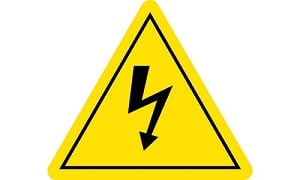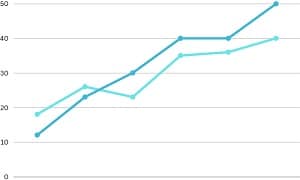Have you ever wondered why 60 Hz is an essential electrical engineering frequency? The reason for this is found in its huge impact on amperage, the vital component of electrical circuits.
In this article, we will explore how many amps is 60 Hz and the specifics of this relationship to amps, providing you with the information for navigating the complexities of electrical power. So, let’s go into more details below.
Table of Contents
Hertz and Electrical Current
Before diving into the main topic of converting Hertz to amps, let’s first understand what Hz is and its importance in electrical systems.
Understanding Hertz (Hz)
In electricity, Hz, also known as frequency, refers to the rate at which the direction of current flow alternates in an electrical system. This rating indicates the number of current cycles per second.
The importance of frequency in electricity lies in its crucial role in power generation, distribution, and equipment compatibility. Considering frequency in current measurement is essential to ensure electrical equipment’s smooth operation and compatibility in various systems.
Converting Hz to Amp
When it comes to converting Hz to amp, it is important to recognize that such a direct conversion is not possible. Unlike a simple unit conversion using a formula or converter, Hz and amps are distinct measurements with different implications in electrical systems.
Rather than focusing on conversion using a calculator, let’s compare the amp drawn in circuits with different frequencies. For instance, the standard frequency for electrical flow in the US is 60 Hz, while in some countries, the standard frequency is 50 Hz.
Given the same 120v rating in an electrical circuit, circuits with different frequencies will exhibit different amp draws. For instance, a 60 Hz circuit may draw 1.2 times higher current than a 50 Hz circuit. Therefore, if a 50 Hz circuit draws 10 amps, the same circuit operating at 60 Hz may draw 12 amps.
Factors that Affect Amperage
To gain an extensive understanding of amperage, consider the factors directly impacting its rating. These factors are critical in electrical engineering as they play a critical role in determining the current flow in an electrical circuit. Let’s look at the main components that influence amperage:
1. Voltage
Voltage, measured in volts (V), is a primary factor determining the amperage in an electrical circuit. Generally, higher voltage levels result in higher amperage, and lower voltage levels correspond to lower amperage.
2. Resistance
Resistance, measured in ohms (Ω), is another crucial factor impacting amperage. Unlike voltage, the effect of resistance on current differs. Higher resistance values impede the flow of current, leading to reduced amperage. Conversely, lower resistance facilitates greater current flow, resulting in higher amperage.
3. Frequency Rating
Frequency rating, expressed in Hertz (Hz), primarily relates to alternating current (AC) circuits. This rating influences the behavior of electrical loads and can influence the amperage drawn by devices. For instance, a higher frequency may result in a proportionally higher figure amp draw, as previously stated.
Conclusion
Understanding how many amps is 60 Hz represents may not be deemed critically essential in electrical engineering. However, grasping the profound relationship between frequency and amperage is paramount.
Furthermore, understanding the significance of voltage, resistance, and frequency rating variables is essential for designing a circuit. It enables us to create highly efficient and trustworthy electrical systems that meet various requirements.

I am Edwin Jones, in charge of designing content for Galvinpower. I aspire to use my experiences in marketing to create reliable and necessary information to help our readers. It has been fun to work with Andrew and apply his incredible knowledge to our content.






